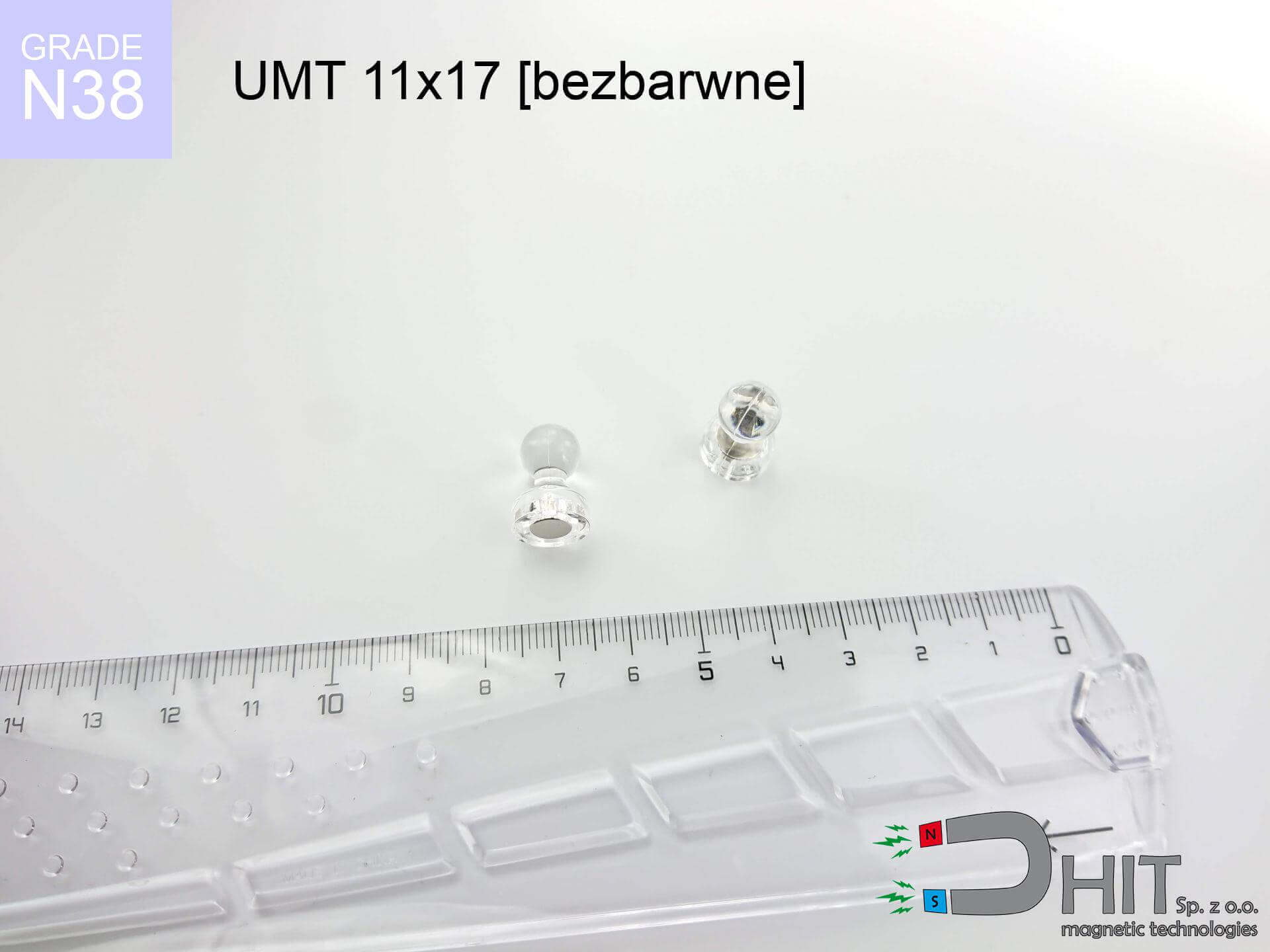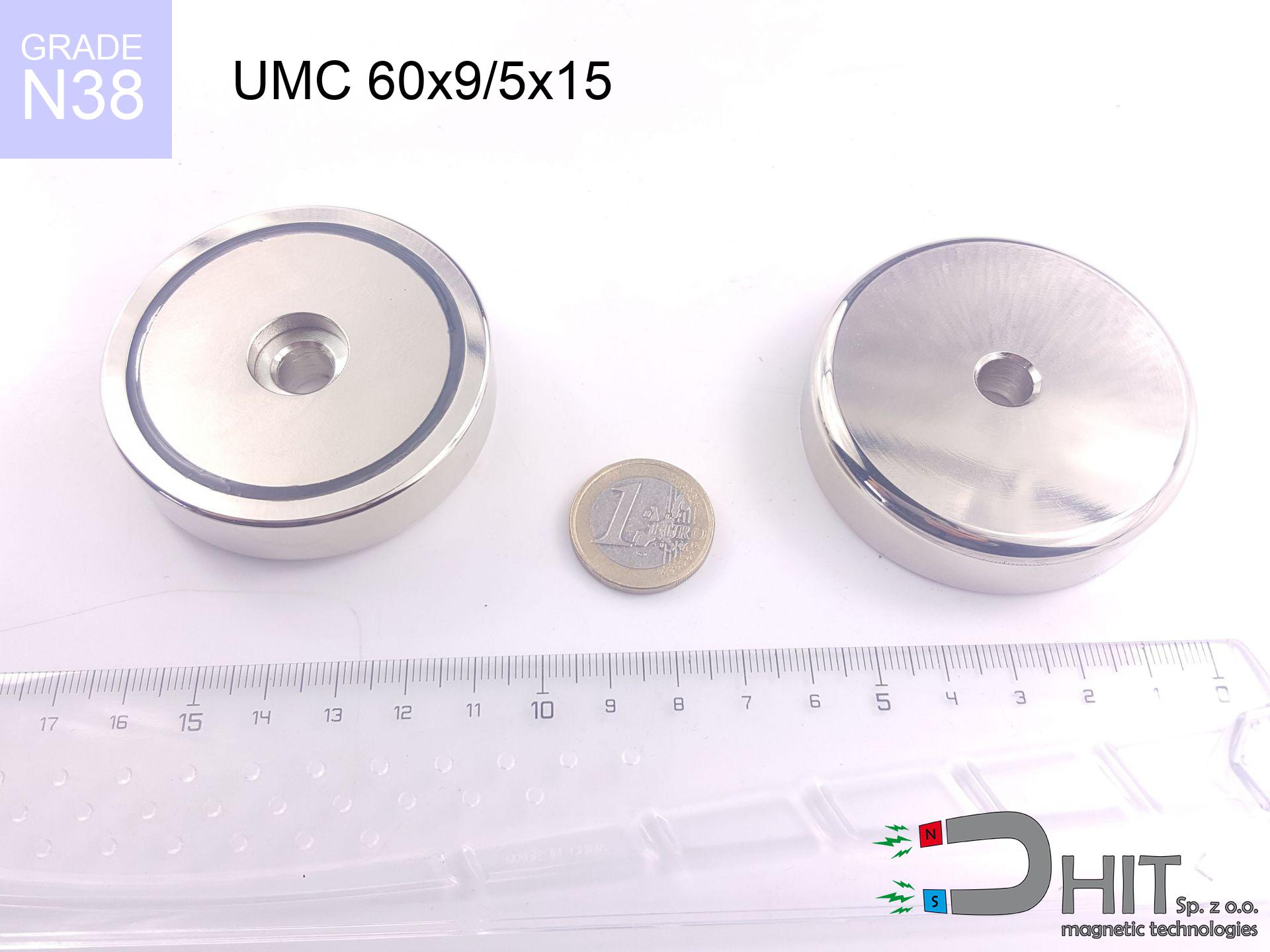HH 16x5.3 [M3] / N38
through hole magnetic holder
catalog number 370480
GTIN: 5906301814900
magnetizing direction
↑ axial
capacity ~
4.00 kg / 39.23 N
max. temperature
≤ 80
°C
catalog number 370480
GTIN: 5906301814900
magnetizing direction
↑ axial
capacity ~
4.00 kg / 39.23 N
max. temperature
≤ 80 °C
3.32 ZŁ gross price (including VAT) / pcs +
2.70 ZŁ net price + 23% VAT / pcs
bulk discounts:
need more quantity?Do you have trouble in choosing?
Call us tel: +48 888 99 98 98 or write via contact form on the contact page. You can check the lifting capacity as well as the appearance of neodymium magnets in our power calculator power calculator
Orders placed by 2:00 PM will be shipped on the same business day.
Specification: through hole magnetic holder 16x5.3 [M3] / N38 ↑ axial
Magnetic properties of the material N38
Physical properties of sintered neodymium magnets Nd2Fe14B
Notice: Undefined index: in /home/currara/domains/dhit.pl/public_html/app/scripts/product-details.php on line 829
Product suggestions
Advantages and disadvantages of neodymium magnets NdFeB.
Apart from immense power, neodymium magnets have the following advantages:
- They do not lose strength over time. After 10 years, their power decreases by only ~1% (theoretically),
- They are highly resistant to demagnetization by external magnetic sources,
- Thanks to the shiny finish and nickel, gold, or silver coating, they have an aesthetic appearance,
- They have very high magnetic induction on the surface of the magnet,
- Thanks to their high temperature resistance, they can operate (depending on the form) even at temperatures up to 230°C and above...
- Due to the option of accurate forming or adaptation to individual needs – neodymium magnets can be produced in many variants of shapes and sizes, which enhances their versatility in applications.
- Significant importance in the industry of new technologies – find application in HDD drives, electric motors, medical devices and other advanced devices.
Disadvantages of neodymium magnets:
- They can break when subjected to a strong impact. If the magnets are exposed to impacts, we recommend using magnets in a protective case. The steel housing in the form of a holder protects the magnet from impacts, and at the same time increases its overall strength,
- High temperatures can reduce the strength of neodymium magnets. Typically, after heating above 80°C, most of them experience a permanent loss in strength (although it is dependent on the form and size). To prevent this, we offer special magnets marked with the symbol [AH], which are highly resistant to high temperatures. They can operate even at temperatures up to 230°C, making them an ideal solution for applications requiring high-temperature operation,
- Due to their susceptibility to corrosion in a humid environment, we recommend using waterproof magnets made of rubber, plastic, or other moisture-resistant materials when using them outdoors,
- The use of a cover or a magnetic holder is recommended due to the limited possibilities of manufacturing threads or complex shapes in the magnet
- Possible danger arising from small pieces of magnets are risky, if swallowed, which becomes significant in the context of children's health. It's also worth noting that small elements of these products can hinder the diagnostic process after entering the body.
Be Cautious with Neodymium Magnets
Neodymium magnets are the strongest, most remarkable magnets on earth, and the surprising force between them can shock you at first.
Familiarize yourself with our information to correctly handle these magnets and avoid significant swellings to your body and prevent damage to the magnets.
Dust and powder from neodymium magnets are highly flammable.
Do not attempt to drill into neodymium magnets. Mechanical processing is also not recommended. If the magnet is crushed into fine powder or dust, it becomes highly flammable.
Neodymium magnets should not be near people with pacemakers.
In the case of neodymium magnets, there is a strong magnetic field. As a result, it interferes with the operation of a heart pacemaker. Even if the magnetic field does not affect the device, it can damage its components or deactivate the entire device.
Neodymium magnets can demagnetize at high temperatures.
Although magnets have demonstrated their effectiveness up to 80°C or 175°F, the temperature can vary depending on the type, shape, and intended use of the specific magnet.
Keep neodymium magnets as far away as possible from GPS and smartphones.
Neodymium magnets generate intense magnetic fields that interfere with magnetometers and compasses used in navigation, as well as internal compasses of smartphones and GPS devices.
The magnet coating is made of nickel, so be cautious if you have an allergy.
Studies clearly indicate a small percentage of people who suffer from metal allergies such as nickel. An allergic reaction often manifests as skin redness and rash. If you have a nickel allergy, you can try wearing gloves or simply avoid direct contact with nickel-plated neodymium magnets.
Neodymium magnets should not be around youngest children.
Neodymium magnets are not toys. You cannot allow them to become toys for children. In the case of small magnets, they can be swallowed and cause choking. In such cases, the only solution is to undergo surgery to remove the magnets, and otherwise, it can even lead to death.
Magnets will attract to each other, so remember not to allow them to pinch together without control or place your fingers in their path.
If you have a finger between or on the path of attracting magnets, there may be a severe cut or a fracture.
Neodymium magnetic are fragile and can easily break and shatter.
Magnets made of neodymium are delicate and will shatter if allowed to collide with each other, even from a distance of a few centimeters. They are coated with a shiny nickel plating similar to steel, but they are not as hard. In the case of a collision between two magnets, there can be a scattering of small sharp metal fragments in different directions. Protecting your eyes is essential.
Under no circumstances should neodymium magnets be placed near a computer HDD, TV, and wallet.
Magnetic fields generated by neodymium magnets can damage magnetic storage media such as floppy disks, credit cards, magnetic ID cards, cassette tapes, video tapes, or other similar devices. They can also damage televisions, VCRs, computer monitors, and CRT displays. You should especially avoid placing neodymium magnets near electronic devices.
To illustrate why neodymium magnets are so dangerous, read the article - How dangerous are strong neodymium magnets?.

![HH 16x5.3 [M3] / N38 HH 16x5.3 [M3] / N38](https://cdn3.dhit.pl/graphics/products/hh-16x5.3-m3-sud.jpg)


![magnetic separator 25x275 [2xM8] / N42 magnetic separator 25x275 [2xM8] / N42](https://cdn3.dhit.pl/graphics/products/sm-25x275-2xm8-boc.jpg)


